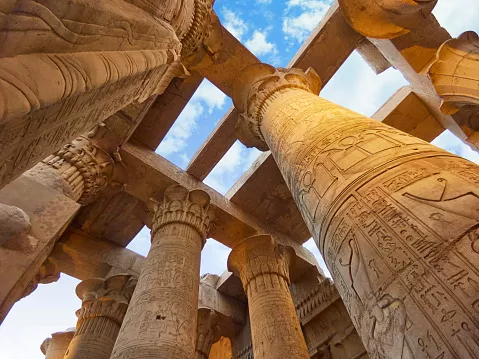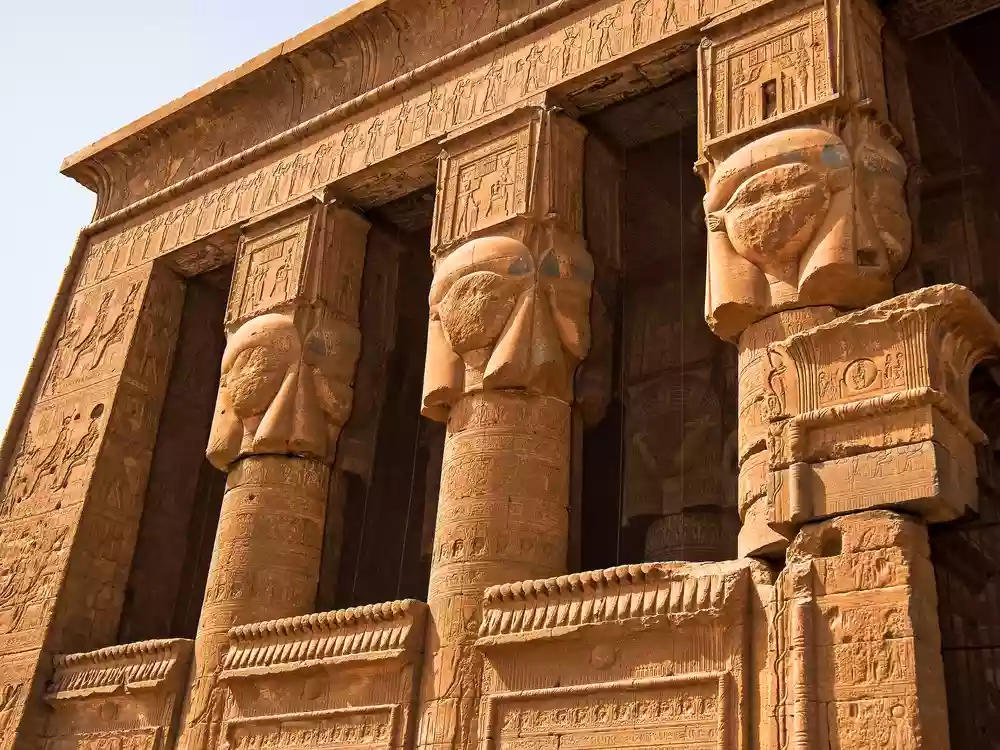Historic Marvels of Kom Ombo City
Kom Ombo City
Want to immerse yourself in a high dosage of history and culture? – Tour the prominent city of Kom Ombo, dig into the ancient city’s history, and witness its brilliant architecture. Step through a portal to the era when the crocodiles were sacred and gaze up at this iconic Pharaonic propaganda. Stroll through the unusual town and capture the ambiance of the glorious ancient Egyptian history. Interesting, right?! – Come on, join us!
Cruise to Kom Ombo City

Complement your historical trip to Luxor with a cruise along the Nile until you reach the old city of Kom Ombo. Flee to the tranquility of the Nile River, breathe in the fresh breeze, and see the city in a way you never expected! Tempted yet?! – I know I am!
Kom Ombo, also known as the City of Gold (Nubt), is an ancient Egyptian city with a picturesque location by the Nile. The town has gained its importance as it dominated the trade routes between Nubia and the Nile Valley. However, its real emergence came along with the establishment of the significant temple of Kom Ombo. Passing by Greco-Roman, Ptolemaic Kingdom, and ancient Egyptian periods, Kom Ombo houses exceptional monuments and reliefs that will leave you stunned. Put on decent walking shoes and let’s explore Kom Ombo!
How to visit Kom Ombo?
- A felucca cruise along the Nile River from Aswan
- Train ride between Luxor and Aswan
- Car ride from Aswan
- A train from Aswan to Kom Ombo station and then, you can hire a car from the station to Kom Ombo Temple
A Traveler’s Guide to Kom Ombo Temple

Welcome to the one-of-a-kind Kom Ombo Temple! Why is this temple remarkably unique? – Kom Ombo Temple is a double temple dedicated to two gods; Sobek, the crocodile god, and Horus the Elder, the falcon god. The temple has duplicate courts, halls, rooms, and sanctuaries, highlighting the mythical relationship between these gods. Unfortunately, much of the temple was destroyed by the Nile, followed by an earthquake. But, the glorious remains are standing evidence of the distant, significant Egyptian era. Let’s take a tour!
Kom Ombo Temple Tour

Prepare to be amazed by the imposing scenery of the temple’s columns rising dramatically over the Nile! Stand in awe as you view the stunning pylon, with its striking decorations and intricate inscriptions. As you step inside, you will be able to see a wall, bearing the gods Sobek, Khons, and Hathor, along with a Hieroglyphic text. Take a look at the amazing relief, depicting the Roman Emperor Domitian wearing Upper Egypt’s crowns. Wander around the Forecourt and don’t forget to take photos of the vibrantly colored reliefs.

Talk a walk across the Vestibule's 10 mighty columns and see the gorgeously decorated walls as if they are just painted. Don’t worry, you will be guarded by the flying vultures and lion-headed Isis. After the Vestibule, you will be led to the majestic Hypostyle Hall and join Euergetes as he makes an offering to the gods. Pass by the three Antechambers and get amazed by the stunning relief of Philometor and Cleopatra, standing in front of the moon god, Khons. Now, you arrive at the temple’s Sanctuary! Stand where the ancient Egyptians used to worship Sobek and Haroeris centuries ago and immerse yourself in the spiritual vibes. And, if you find a mummified Pharaoh coming for you, just RUN!
What to visit around Kom Ombo Temple?
-
The Birth House and Crocodile Museum
Just in front of Kom Ombo Temple, you will find the remains of the stunning Birth House. As you explore the area, you will see a Roman doorway and a ruined chapel that once witnessed wondrous glory. Also, you will find the pool, where they kept the young crocodiles. A short walk from Kom Ombo Temple, stop by the Crocodile Museum and take a look at an impressive collection of mummified crocodiles.
-
Temple of Hathor

Walk to the south of Kom Ombo temple and you’ll be rewarded by another charming temple dedicated to Hathor.
-
Quarries of Silsila East Bank
And, we can’t miss the spectacular Quarries of Silsila situated picturesquely at the Nile’s east bank. Thousands of workers were employed during the New Kingdom to cut stone for the Ramesseum’s construction in Thebes. Roam the historical area and discover its hidden treasures, including the town of Khenit and its sacred temple.
-
Rock Temples of Silsila
Let’s hit a unique monument, off the beaten track, the Rock Temples of Silsila! Explore the rock-cut tomb, adorned with memorial inscriptions and significant reliefs, dating back to the reign of Horemheb. The façade, central doorway, and chapel entrance will definitely catch your eye with its stunning artistic value.






